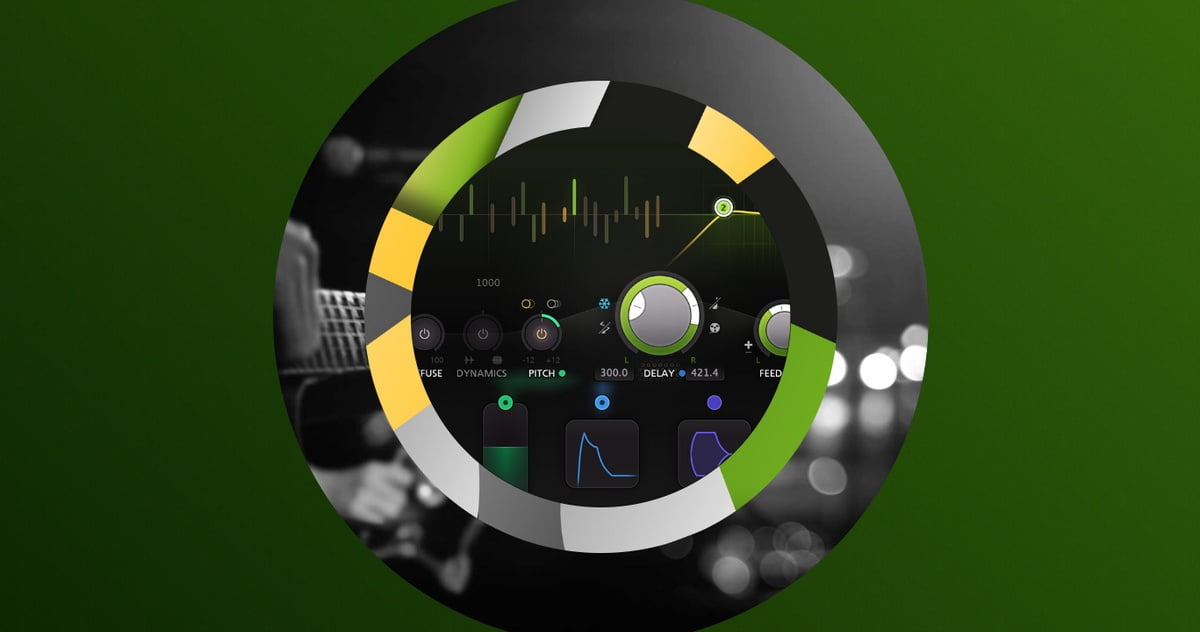

Above these knobs is a filter display that allows for creation of up to six filters with selectable high/low shelf, high/low/band pass, bell, or notch, with slopes between -6dB and -48dB/octave.

The last knob is for wet/dry and output panning, plus a delay mix and stereo width. The Feedback/Pan knob controls the total delay feedback and where the feedback is panned, and the Cross Feedback Mix sets the amount of crossover between channels. Around the main delay knob are additional freeze, ping-pong, sync, and read mode controls. This first pan controls the relative length of the pan, so at dead center both channels are delayed the same percentage of the tail length, and setting it left or right increases the length of those tails respectively while shortening the other. The delay is primarily controlled with a concentric knob in the middle, with the inner knob handling the delay tail length in milliseconds and the outer ring controlling the delay pan. Let’s deep-dive into the numerous features in Timeless 3: Delay and Filters Choosing the Best Digital Audio Workstation for your Home Studio.Best Acoustic Treatments for Home Studio 2021.Best MIDI Drum Pads for Home Studio 2021.Best MIDI Control Surfaces for Home Studio 2021.Best MIDI Keyboards for Home Studio 2021.Best Audio Interfaces for Home Studio 2021.Fixing Up a Vintage Reel-to-Reel Tape Recorder.
FABFILTER TIMELESS 3 GEARSLUTZ HOW TO
How To Build a Studio Guitar with 48 Tones.How to Calibrate Your Studio Monitors with Sonarworks Reference 4 Studio.Synths and Virtual Instruments Menu Toggle.Audified AmpLion 2 Rock Essentials Review.


 0 kommentar(er)
0 kommentar(er)
